Distinctive Collections
This Bitterly Beautiful Land
Open gallery

This Bitterly Beautiful Land: A Texas Commonplace Book, 1972.
I’ll confess to having more favorite books in the collection than I can name from memory. It’s an occupational hazard, and a side effect of having such an outstanding collection here. The book above is consistently in my “most favorite” books, and a recent discovery in the papers of Edward A. Clark prompted me to share this breathtaking book with you.
First, we should address the use of the phrase “commonplace book.” The book printed in only 275 copies, is certainly not common. Sid Berger, in his peerless The Dictionary of the Book, describes a commonplace book as “a collection, in book form (printed or manuscript) of excerpts, sayings, quotable passages, extracts from other texts, or whatever else interested the compiler.” The book is, in effect, a bound collection of broadsides all unified around the subject of Texas.
I must confess to this not being my first time with a commonplace book. The first one I encountered in my career was the commonplace book of Emma C. Embury, an American author and poet.
None other than Carl Hertzog wrote the introduction to the book. He notes the difficulty that Al Lowman (the editor of the book), William Holman (the printer and designer), and Barbara Whitehead (the illustrator) faced in creating This Bitterly Beautiful Land: “The difficulty of accomplishing this craftsmanship in printing a book of this nature, wherein every page must be created as a complete unit yet blend with the book as a whole, is prodigious.” Hertzog also notes the manual work required for the creation of the book – the paper was handmade, Whitehead created the line drawings and woodcuts by hand, Holman hand set the pages and hand-fed the paper into a manual press. Their hard work and attention to detail comes through in the simple elegance of the pages.
Indeed, several of the pages were off printed as standalone broadsides – such as the J. Frank Dobie quote that came to us in the library of F. Warren Roberts:
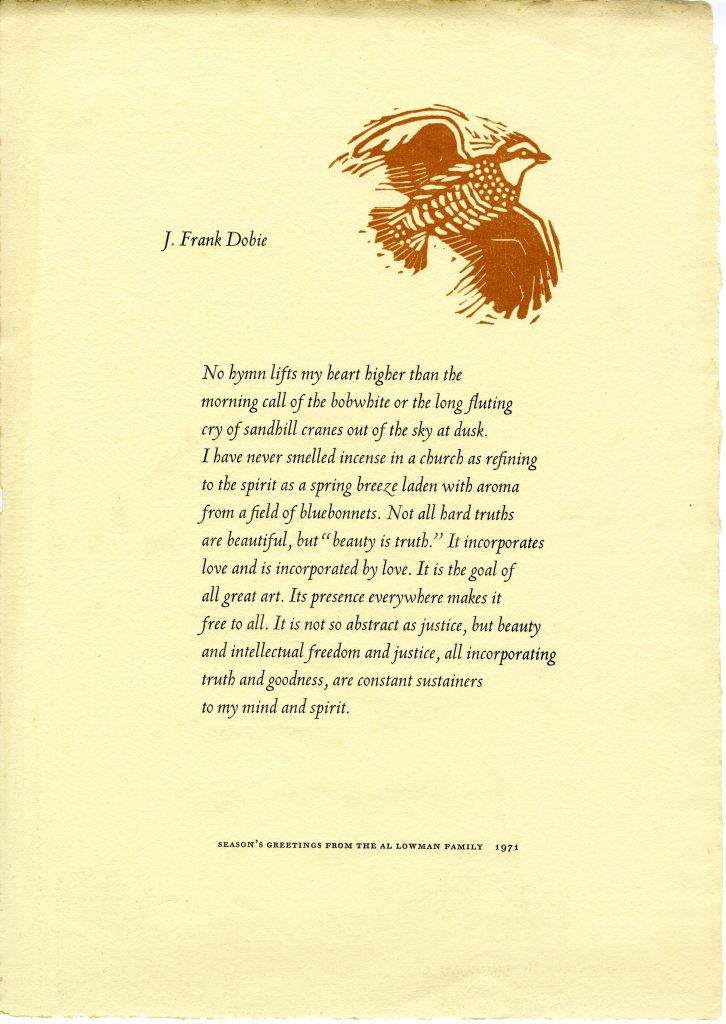
The quote comes from an essay, later recorded for the program This I Believe by J. Frank Dobie:
Indeed, if someone was to ask me what it means to be a Texan, I would likely put this stunning volume in front of them. The quotes and selections are haunting, moving, humorous, and strange – a fantastic mirror to Texas. Here are some of my favorites:
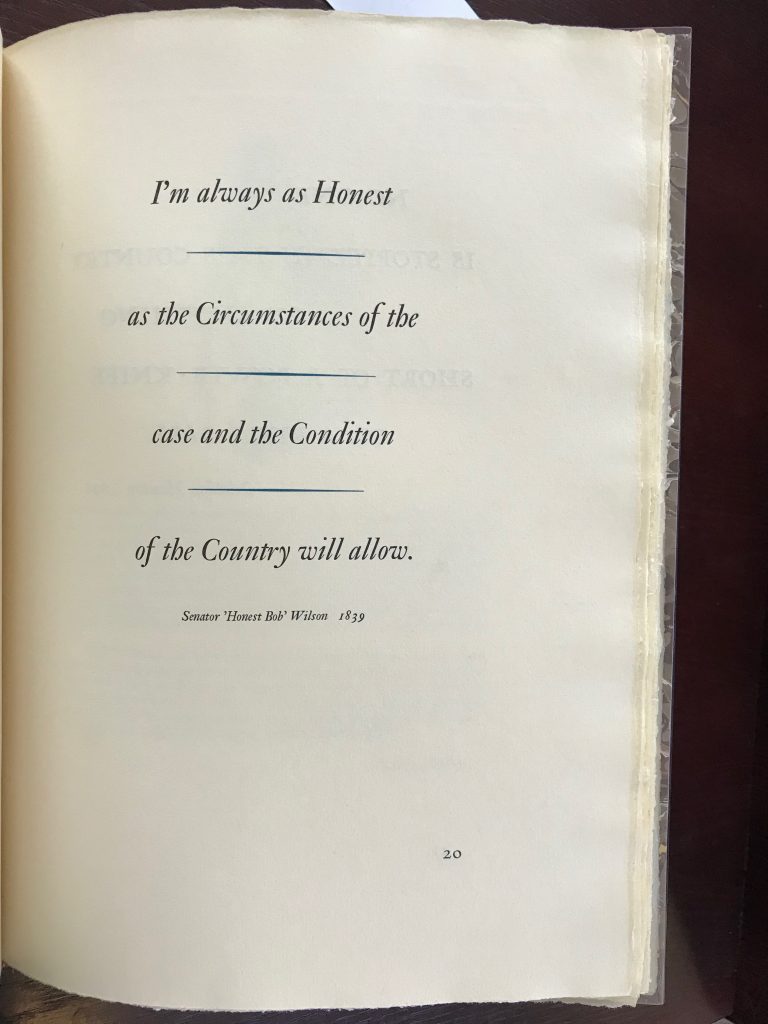
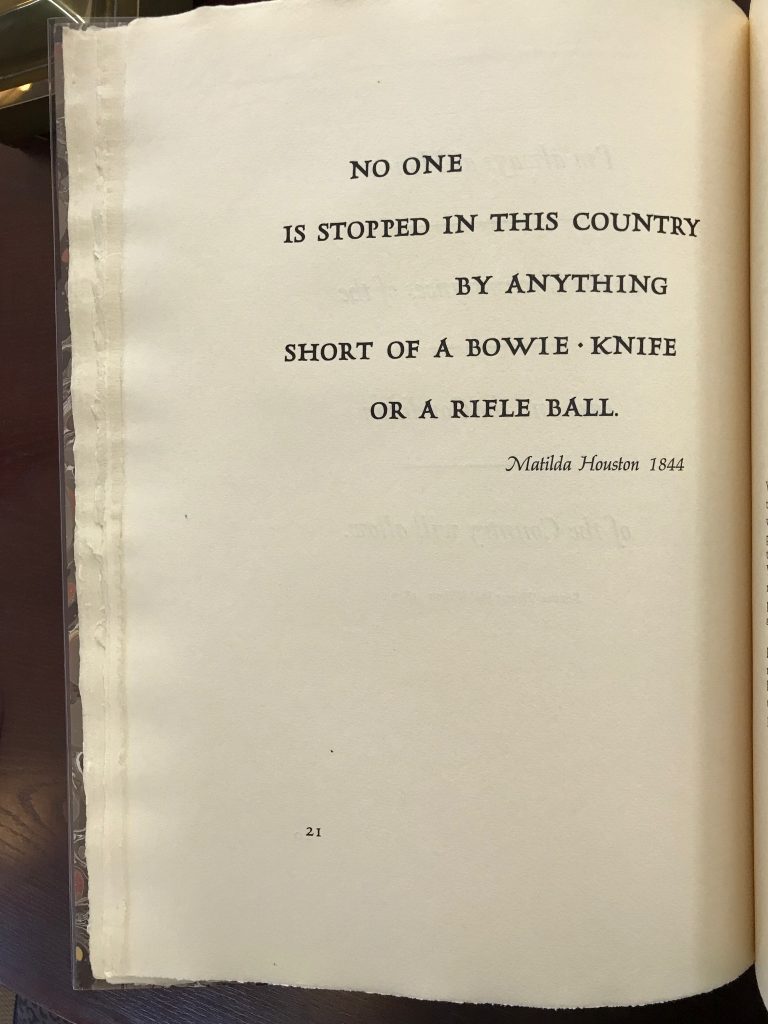

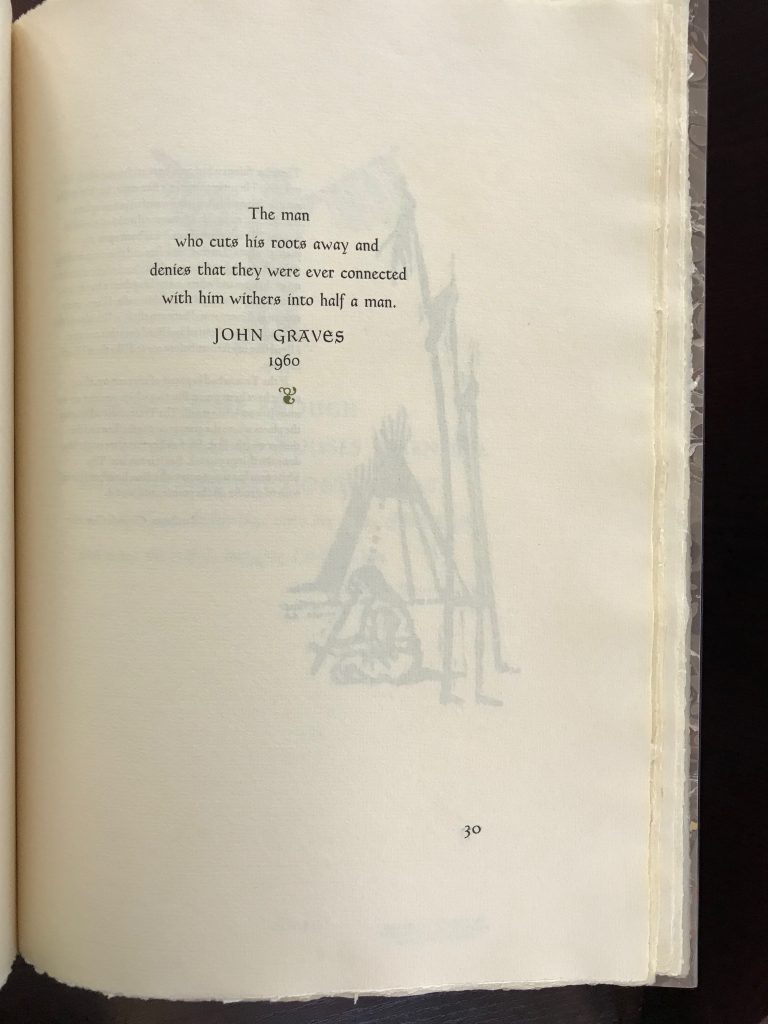
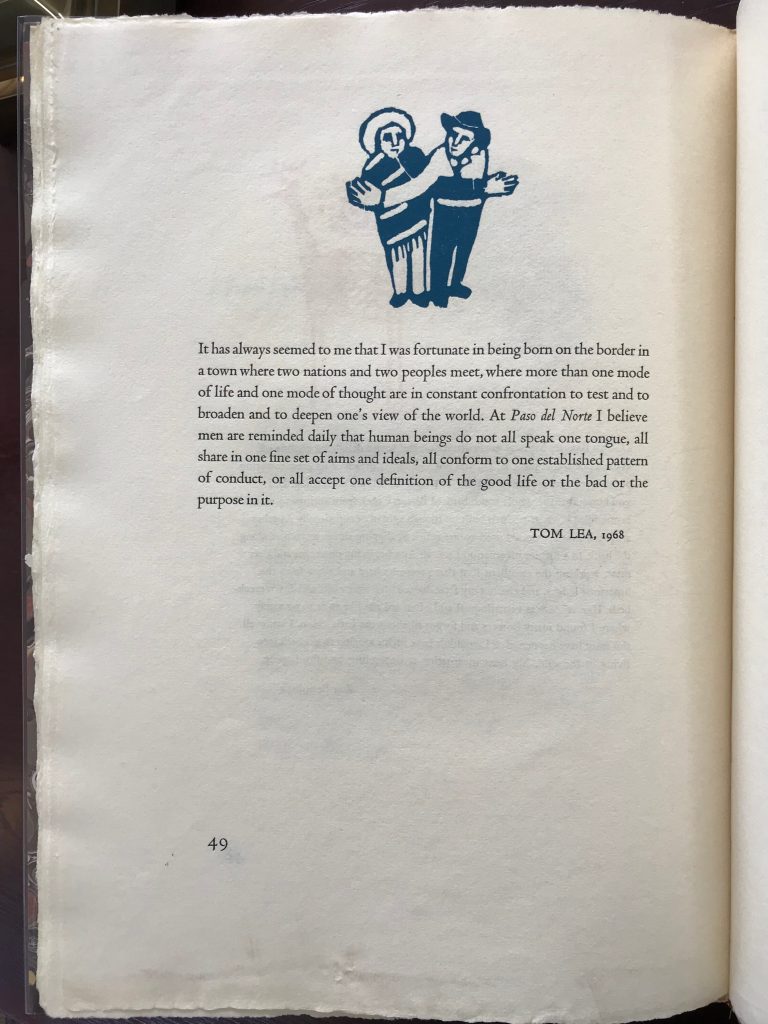
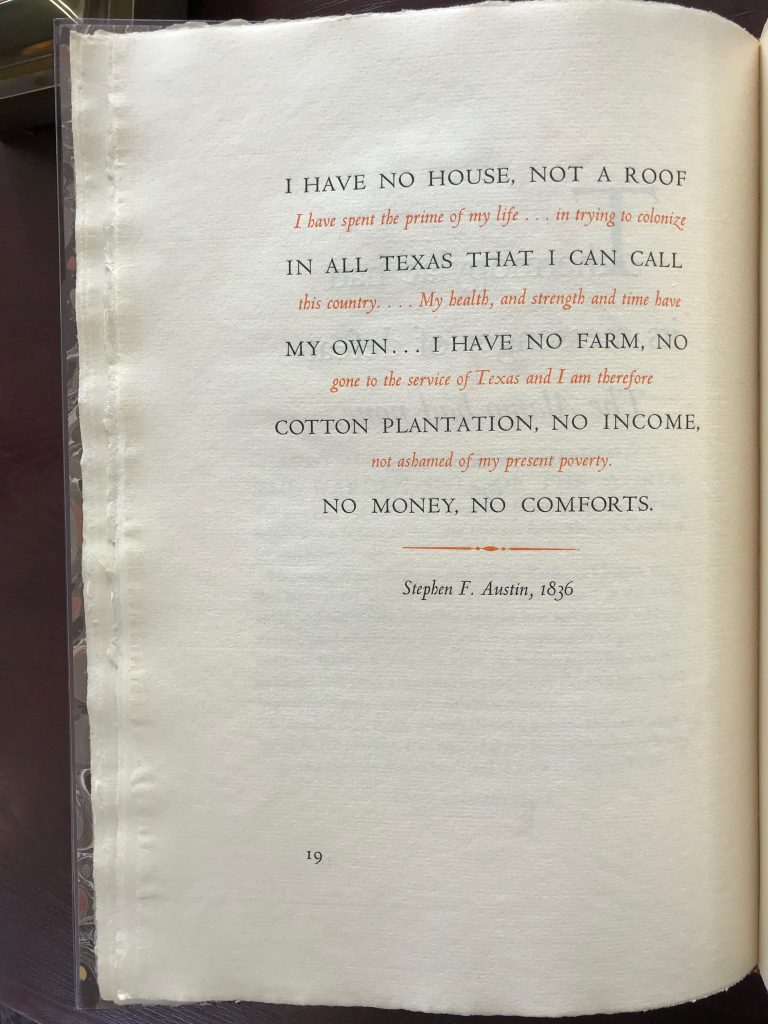
Today’s post about this book was catalyzed by my discovery of a tearsheet from the book in the papers of Edward A. Clark yesterday. The sheet is from the final quote in the book, and is succeeded by the first two pages of the bibliography. My supposition is that Clark obtained the sheet directly from Holman at the time of printing either as he was present at the printing of the sheet, or that he was a patron of the project itself. Make sure to read the pencil notations at the top:
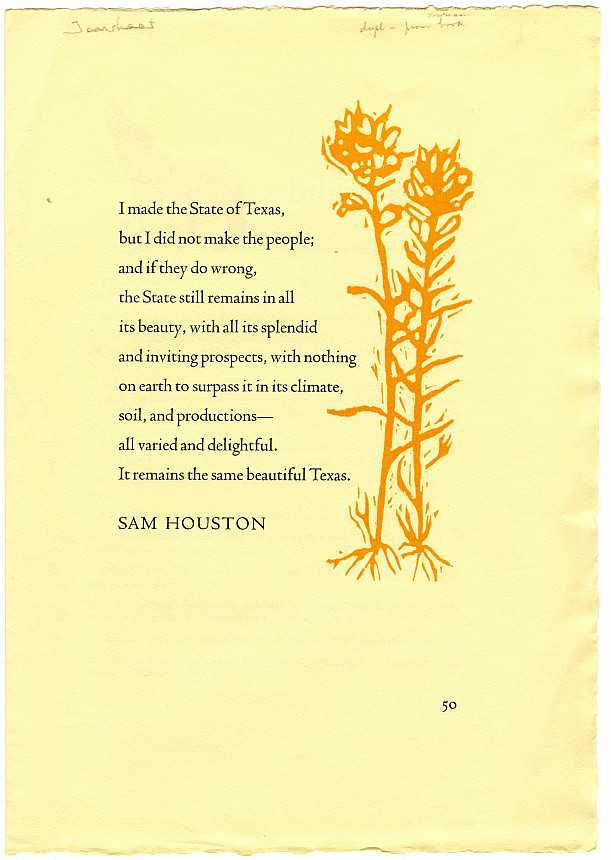
Notably, the Clark copy is one of 25 numbered by Barbara Holman, and is bound in half morocco and marbled paper, making it even more striking.














